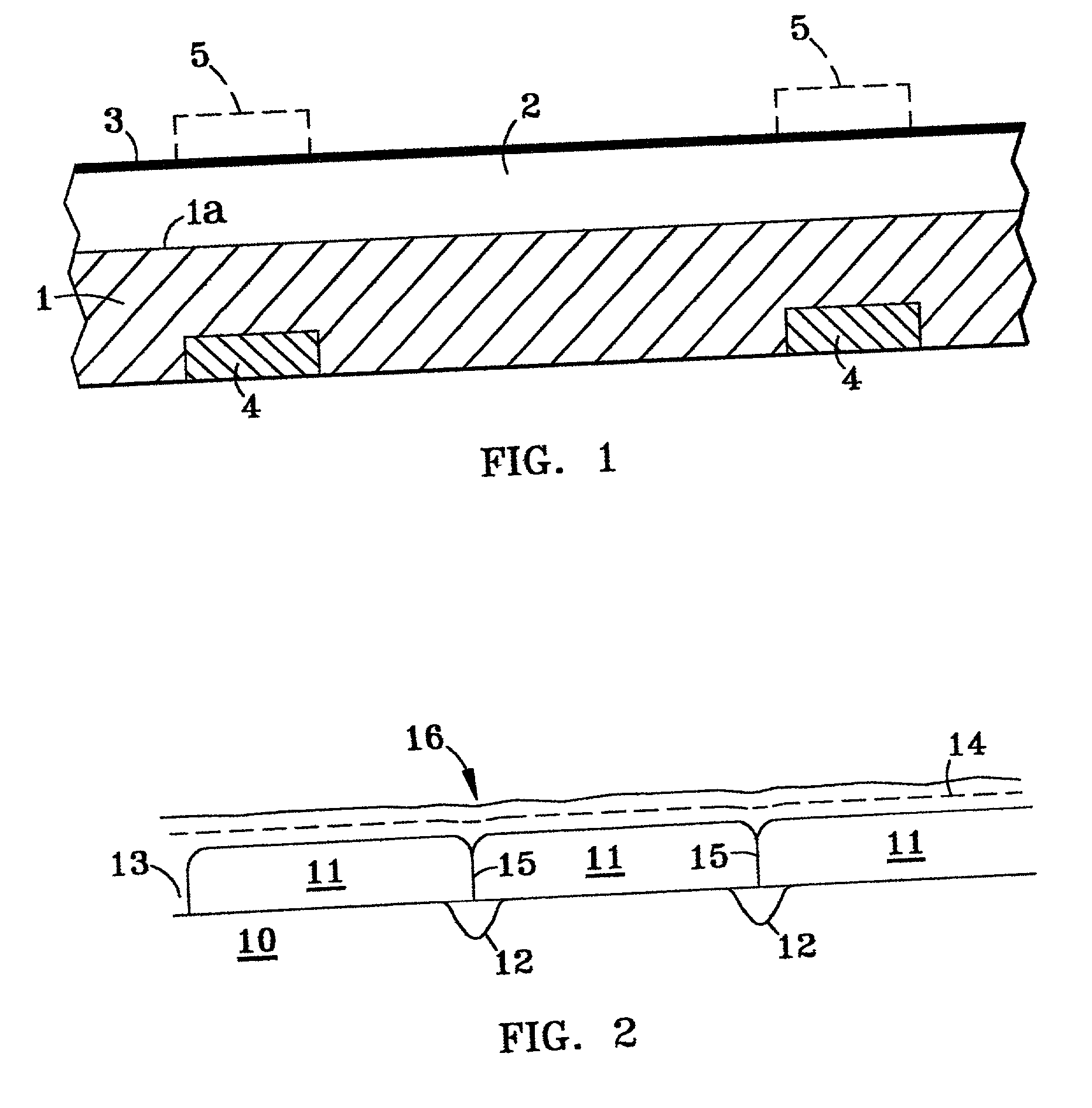Method for preparing the surface of a dielectric
a dielectric surface and dielectric technology, applied in the direction of liquid surface applicators, coatings, semiconductor devices, etc., can solve the problems of unpredictable and detrimental changes in circuit conditions, reducing the final overall charge storage capacity of the capacitor, and not being able to maximize the overall storage charge of the capacitor
- Summary
- Abstract
- Description
- Claims
- Application Information
AI Technical Summary
Benefits of technology
Problems solved by technology
Method used
Image
Examples
Embodiment Construction
[0045] The wafer would be subjected to the following steps: 1) The BST wafer would be placed in a reactor; 2) The flow of HF and NH.sub.3 would be introduced into the reactor upstream from the BST wafer; 3)The wafer would be exposed to HF and NH.sub.3 for a time between 2 minutes 20 seconds and 40 minutes and the reactor would have a temperature set at 23 C. and a pressure of 10 mTorr; 4)The wafer would then be rinsed with deionized water at 23 C. for 2 minutes; 5) The wafer would then be spun dry. Steps 1-5 would be repeated a second time.
[0046] In alternative embodiments of the invention, high dielectric constant materials such as titanium, tantalum oxides or bismuth can be deposited or a dielectric surface treatment can be used to either introduce a non-constituent element to the surface only of the high dielectric constant material which enhances the functioning of the high dielectric constant material or remove non-bulk contaminants from the surface of the high dielectric const...
PUM
| Property | Measurement | Unit |
|---|---|---|
| dielectric constant | aaaaa | aaaaa |
| dielectric thickness | aaaaa | aaaaa |
| pressure | aaaaa | aaaaa |
Abstract
Description
Claims
Application Information
 Login to View More
Login to View More - R&D
- Intellectual Property
- Life Sciences
- Materials
- Tech Scout
- Unparalleled Data Quality
- Higher Quality Content
- 60% Fewer Hallucinations
Browse by: Latest US Patents, China's latest patents, Technical Efficacy Thesaurus, Application Domain, Technology Topic, Popular Technical Reports.
© 2025 PatSnap. All rights reserved.Legal|Privacy policy|Modern Slavery Act Transparency Statement|Sitemap|About US| Contact US: help@patsnap.com

